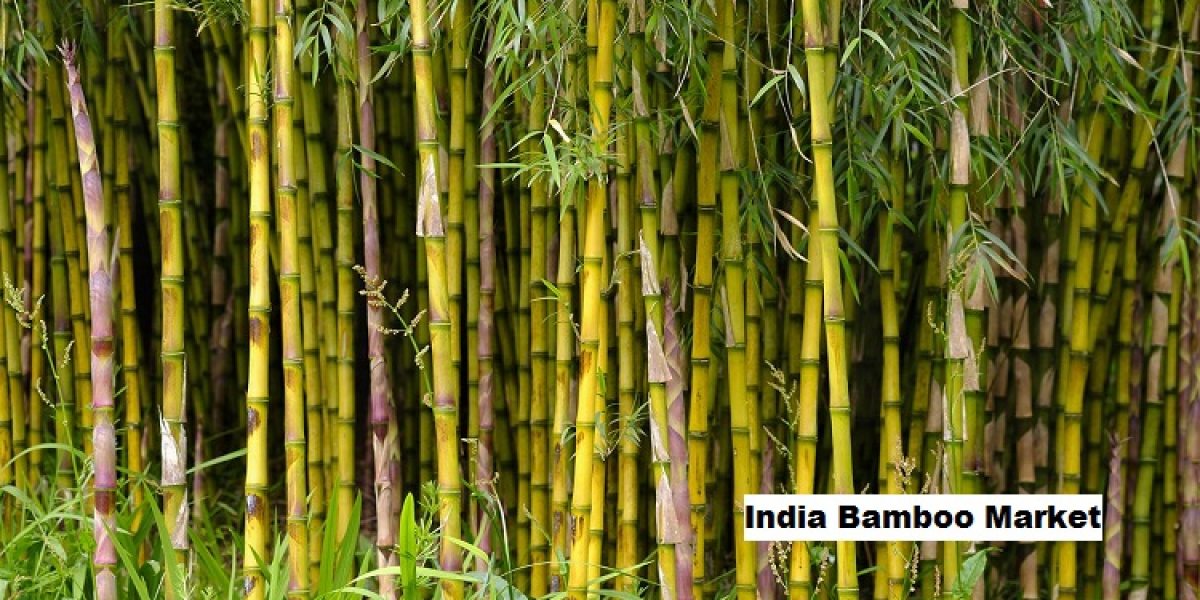According to TechSci Research report, “India Bamboo Market -Industry Size, Share, Trends, Competition Forecast & Opportunities, 2029”, the India Bamboo Market stood at USD 314.67 Million in 2023 and is anticipated to grow with a CAGR of 5.82% in the forecast period, 2025-2029. The drivers of the Indian Bamboo Market are primarily fueled by a combination of factors. These include the government's push for bamboo industry development, the increasing consumer preference for eco-friendly products, the versatility of bamboo in various sectors such as construction, textiles, and furniture.
Additionally, the growth of the handicrafts sector, which extensively utilizes bamboo, and the rural employment opportunities created by bamboo cultivation, are further stimulating the market growth.
India, with its diverse climatic conditions, offers a conducive environment for the growth of a variety of bamboo species. It is the second-largest reserve of bamboo globally and renowned for its bamboo richness, boasting over 136 species scattered across different parts of the country. The Indian bamboo market has been witnessing significant growth in recent years, fueled by the government's supportive policies and increasing awareness about the ecological benefits of bamboo. Recognizing its potential in uplifting the rural economy and contributing to sustainable development, the Indian government has introduced several initiatives to promote bamboo cultivation and its related industries.
The National Bamboo Mission, for instance, seeks to increase the area under bamboo cultivation and improve post-harvest management. The mission has also been pivotal in promoting market development by establishing marketing federations and facilitating access to domestic and international markets. Bamboo in India is primarily used for handicrafts, furniture, and housing material, contributing significantly to the rural economy. The traditional bamboo craft industry, in particular, provides employment opportunities to many artisans. With the advent of modern processing techniques, bamboo is increasingly being used in innovative applications such as flooring, paneling, and paper production, thus widening its market potential.
Moreover, the increased focus on sustainable living and green construction has led to growing demand for bamboo as a construction material. It's being hailed as the 'green steel' for its strength, flexibility, and renewability, propelling its adoption in the construction industry. However, despite the potential, the Indian bamboo market faces certain challenges. Traditional extraction methods, inadequate processing facilities, and lack of skilled manpower are some issues hindering the market growth. The bamboo sector also suffers from a fragmented value chain and insufficient market linkages, leading to low profitability for farmers.
Browse over XX market data Figures spread through XX Pages and an in-depth TOC on "India Bamboo Market”
https://www.techsciresearch.com/report/india-bamboo-market/4365.html
The future of the Indian bamboo market, nevertheless, looks promising. The government's push for 'Vocal for Local' and 'Aatmanirbhar Bharat' (self-reliant India) is expected to further stimulate the domestic bamboo industry. Moreover, with increasing technological interventions and upskilling of artisans, the market is poised to overcome existing challenges and continue its growth trajectory.
The Indian bamboo market, backed by government initiatives and burgeoning demand from various industries, is poised for significant growth. Despite the challenges, with proper interventions and policy support, the sector has immense potential to transform the socio-economic landscape of rural India and contribute to the nation's sustainable development goals.
The India Bamboo Market is segmented into species, type, structure, length, regional distribution, and company
Based on structure, in the Indian bamboo market, the non-uniform sector appears to be the dominant player due to the inherent nature of bamboo growth across different regions of India. The variability in size, quality, and species of bamboo contributes significantly to the non-uniformity witnessed in the market. Moreover, the absence of standardized cultivation and harvesting processes further strengthens the stronghold of the non-uniform sector.
However, recognizing the need for greater uniformity, concerted efforts are being made to enhance cultivation practices. These efforts include the introduction of innovative techniques and technologies that aim to improve the consistency and quality of bamboo production. Additionally, the establishment of bamboo processing units is being encouraged to streamline the post-harvest stages and promote standardization. By promoting uniformity in the Indian bamboo market, these initiatives strive to create a more reliable and sustainable industry that can cater to the diverse needs of consumers while maximizing the economic potential of this valuable resource.
Based on region, the North region of India, particularly the North-Eastern states, holds a prominent position in the Indian Bamboo market. This is primarily attributed to its advantageous climatic conditions and the abundance of diverse bamboo species found in the region. With approximately 60% of India's total bamboo reserves, the North region serves as a key supplier of raw material for the thriving bamboo industry. Moreover, the market is propelled by the invaluable traditional knowledge and craftsmanship skills possessed by the local communities, who have mastered the art of bamboo craftsmanship over generations. Their expertise and artistic flair contribute significantly to the market's growth and success.
In addition to the natural advantages and cultural heritage, the government's proactive support and promotion of bamboo cultivation and manufacturing further bolster the North region's dominance in the Indian Bamboo Market. These favorable policies create an enabling environment for the industry to flourish and ensure a sustainable supply chain. Overall, the North region of India stands as a strong pillar in the Indian Bamboo market, owing to its favorable climate, rich diversity of bamboo species, skilled artisans, and supportive government policies.
Major companies operating in India Bamboo Market are:
- Kerala State Bamboo Corporation Ltd.
- Epitome Bamboowood Products
- Ballarpur Industries Limited (BILT)
- Amlai Paper Mill
- Green Gold Bamboo Tech Pvt. Ltd.
- Kolan India
- Green Gold Bamboo Tech Pvt. Ltd.
Download Free Sample Report
https://www.techsciresearch.com/sample-report.aspx?cid=4365
Customers can also request for 10% free customization on this report
“The future of the bamboo market in India appears to be incredibly promising, characterized by steady growth and exciting diversification. With the Indian government's increased emphasis on bamboo cultivation as a means of not just economic development, but also environmental sustainability, there is immense potential for significant expansion in this sector. The favorable policies and support for bamboo-based industries have already paved the way for new opportunities and are attracting both domestic and international investors.
Moreover, the rising global demand for eco-friendly and renewable materials has further escalated the market potential for bamboo-based products. Bamboo, being a versatile resource, finds applications in various industries, ranging from construction and furniture to textiles and paper. The exceptional strength, durability, and natural aesthetic appeal of bamboo make it an ideal choice for sustainable and innovative solutions.
In addition to its remarkable physical properties, bamboo also offers several socio-economic benefits. Its rapid growth cycle and ability to thrive in diverse climatic conditions make it an excellent source of income for farmers and rural communities. By promoting bamboo cultivation and value-added processing, India can create employment opportunities, enhance rural livelihoods, and contribute to the country's sustainable development goals.
The future of the bamboo market in India is not just promising but also holds the potential to transform the country's economy and contribute to a greener and more sustainable future. By harnessing the power of bamboo and embracing its versatility, India can position itself as a leader in the global bamboo industry, fostering economic growth, environmental conservation, and social development.,” said Mr. Karan Chechi, Research Director with TechSci Research, a research-based management consulting firm.
“India Bamboo Market By Species (Bambusa Tulda, Bambusa Bambos, Dendrocalamus Strictus, Others), By Type (Clumping, Running, Dwarf, Rare, Others), By Structure (Uniform and Non-Uniform), By Length (0-10m, 10-20m, 20-30m, above 30m), By Region, Competition, Forecast & Opportunities, 2019-2029F”, has evaluated the future growth potential of India Bamboo Market and provides statistics & information on market size, structure and future market growth. The report intends to provide cutting-edge market intelligence and help decision makers take sound investment decisions. Besides, the report also identifies and analyzes the emerging trends along with essential drivers, challenges, and opportunities in India Bamboo Market.
Contact
TechSci Research LLC
420 Lexington Avenue, Suite 300,
New York, United States- 10170
Tel: +1-332-258-6602
Email: sales@techsciresearch.com
Website: www.techsciresearch.com









